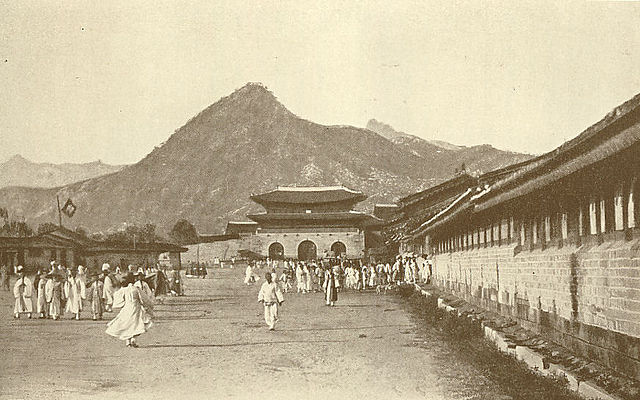The history of Seoul can be traced back as far as 18 BC, although humans have occupied the area now known as Seoul since the Paleolithic Age. It has been the capital of numerous kingdoms on the Korean Peninsula since it was established.
Donggwoldo, Joseon Dynasty painting of main royal palaces of Seoul
Gyeonghungak was an attached two-storied building of Daejojeon Hall of Changdeok Palace. The first story was Gyeonghungak, and the second story was Jinggwangru.
The street in front of Gyeongbokgung palace in the late 19th century
Gwanghwa Gate, the main gate of Gyeongbokgung Palace
Seoul, officially Seoul Special City, is the capital of the Republic of Korea (ROK), commonly known as South Korea, and the country's most extensive urban center. The broader Seoul Capital Area, encompassing Gyeonggi province and Incheon metropolitan city, emerged as the world's fourth largest metropolitan economy in 2014, trailing only Tokyo, New York City, and Los Angeles, hosting more than half of South Korea's population. Although Seoul's population peaked at slightly over 10 million, it has gradually decreased since 2014, standing at approximately 9.97 million residents as of 2020. Seoul is the seat of the South Korean government.
Image: Seoul (175734251) (cropped)
Image: 덕수궁의 가을
Image: Republic of Korea capitol
Image: Lotte World day view 2








